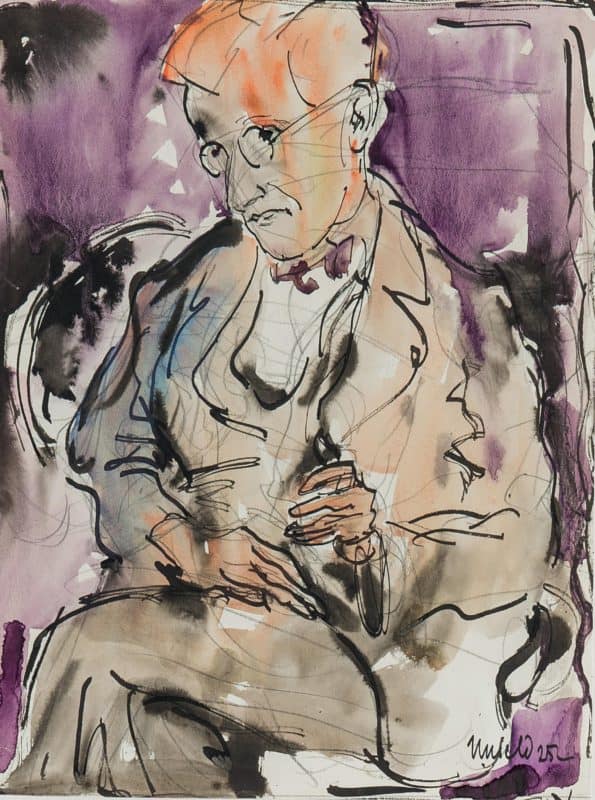

The architect and painter Albert Unseld was born in Ulm, one of fifteen children. After taking his final exams in 1898, he began studying architecture at the Technical University of Stuttgart. This was at the insistence of his father, who wanted his son to enter a stable profession. During his studies, Unseld also took painting lessons from Adolf Treidler and Gustav Halmhuber. In 1902, Unseld began working in the private studio of the architect Paul Wallot in Dresden, and in 1903 he became Wallot’s assistant at the Dresden School of Applied Arts. During this time, Unseld also took painting lessons. In 1907, he was appointed a government architect and the head of the Building Academy in Biberach an der Riss. Unseld was also active as a freelance architect in Ulm from 1908 onwards, and became more and more established as an artist as well. In 1929, he became a member of the association Die Juryfreien in Munich; one year later, he joined the Association of German Artists. He thereafter enjoyed numerous new opportunities to exhibit his art, including the exhibition of the Association of German Artists entitled “Painting and Sculpture in Germany in 1936” in the Kunstverein in Hamburg, though it was closed by the Nazis after just a few days.
In November 1936, the Association of German Artists was dissolved. Unseld resigned his position as chairman of the Artists’ Guild after an altercation with Ulm’s district leader of the Nazi Party. As a result of political pressure, Unseld worked henceforth discreetly, withdrew from public life and went into inner emigration. After the war, Unseld made drawings and other pictures of the destruction of his home town of Ulm in order to document it.
